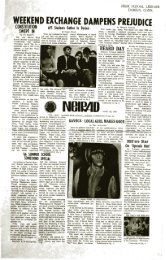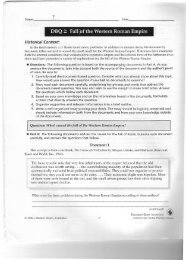Forensic Investigation Curriculum (pdf) - Darien Public Schools
Forensic Investigation Curriculum (pdf) - Darien Public Schools
Forensic Investigation Curriculum (pdf) - Darien Public Schools
Create successful ePaper yourself
Turn your PDF publications into a flip-book with our unique Google optimized e-Paper software.
Unit 5: Serology (Blood Typing & Spatter Analysis)<br />
Essential Question 1: What is blood, and how is it significant in forensic investigation?<br />
Essential Question 2: How is blood found, identified, collected, and analyzed in crime<br />
scene reconstruction?<br />
CONTENT KNOWLEDGE OBJECTIVES<br />
Initial Understanding<br />
� List the components and functions of the human cardiovascular system.<br />
� Describe the composition of blood.<br />
Developing an Interpretation<br />
� Explain how oxygen is carried by a red blood cell.<br />
� State the characteristics and function of each part of human blood.<br />
Making Connections<br />
� Discuss the physical characteristics and behavior of blood, and how these make<br />
blood an important source of evidence in crime-scene reconstruction.<br />
� Demonstrate why blood typing is class evidence, and not individual evidence, and<br />
relate this to human genetics.<br />
� Explain how blood evidence must be collected and stored, and why.<br />
Taking a Critical Stance<br />
� Prioritize the usefulness of each component of blood in forensic investigation.<br />
� Identify different patterns in blood spatter.<br />
� Calculate impact angles, points of convergence and origin for blood spatter<br />
patterns.<br />
40



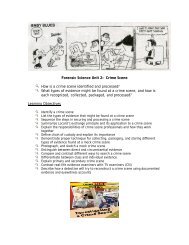
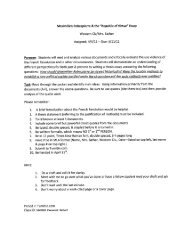

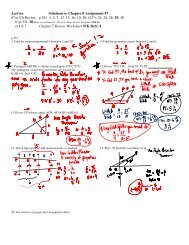
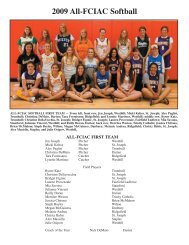

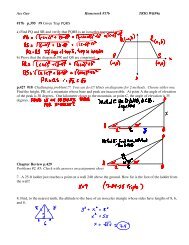
![Name Independent Practice Worksheet 23.]](https://img.yumpu.com/13527672/1/190x245/name-independent-practice-worksheet-23.jpg?quality=85)
